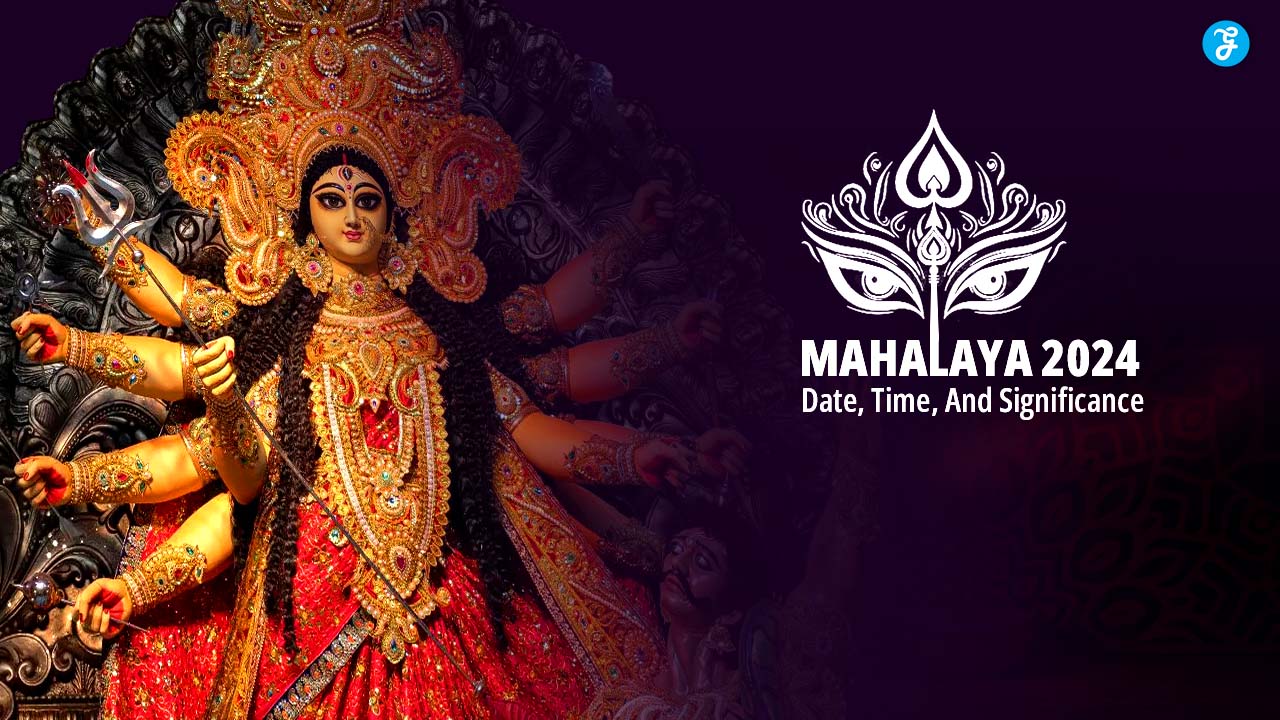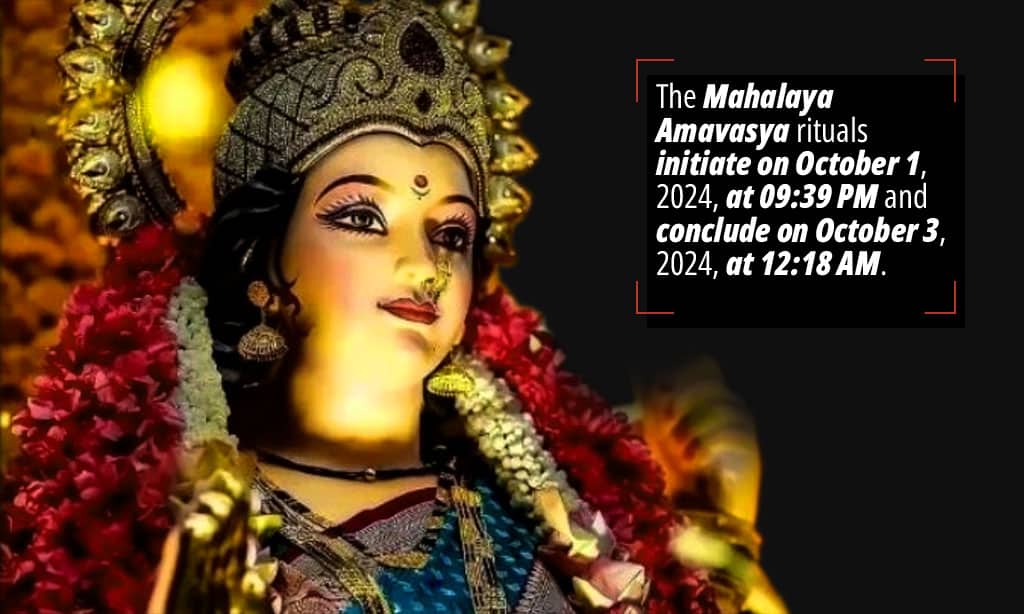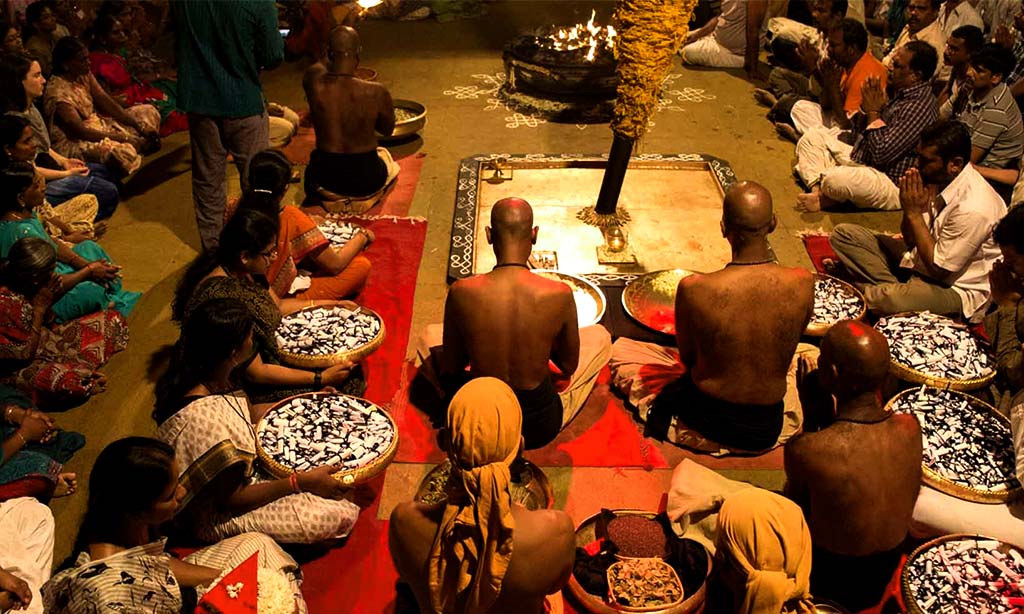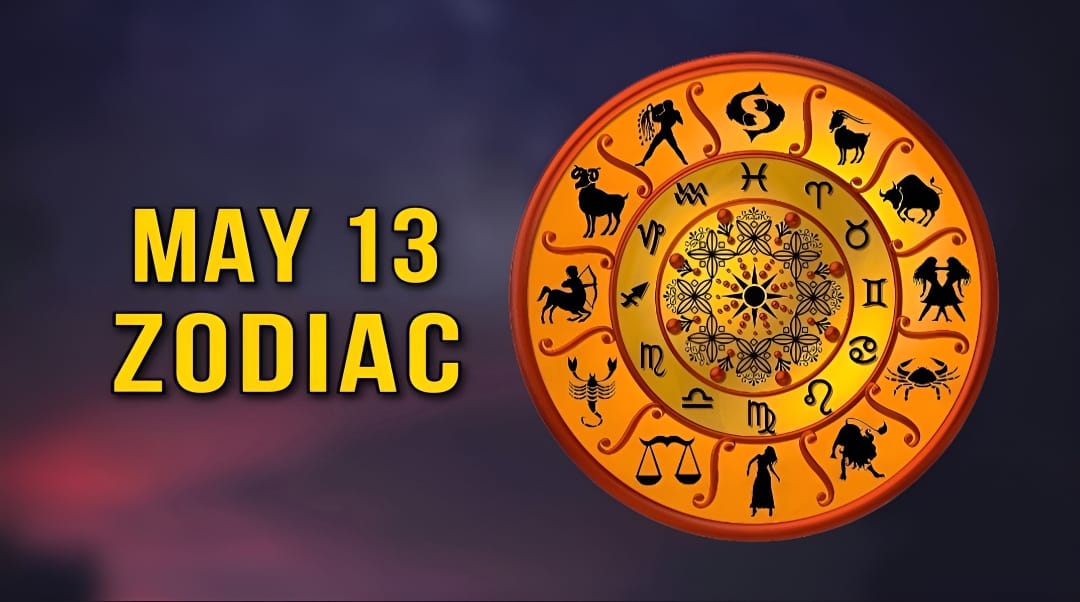Finding out about special days and their meanings can be hard. You might want to know more about them but don’t know where to start. If you’re curious about Mahalaya 2024, you’ve come to the right place.
Mahalaya Amavasya in 2024 falls on October 2. This day marks a very important time for many people who follow Hindu traditions.
This article will explain why Mahalaya Amavasya is so special and what happens during this time. We’ll talk about rituals, significance, and how it connects with other festivals like Navratri and Durga Puja.
Ready? Let’s learn more together!
When is Mahalaya 2024?
Mahalaya 2024 will occur on the October 2, 2024. This particular day holds great significance as it signifies the conclusion of Pitru Paksha and initiates Devi Paksha. Pitru Paksha, starting from the 17th of September and continuing till the 2nd of October, is a period dedicated to paying homage to one’s ancestors.
Following this, Mahalaya initiates the Durga Puja festival. Events like Maha Ashtami and Vijaya Dashami serve as markers for this festival, which honors Goddess Durga’s victory over evil.
Consequently, Mahalaya serves as a prelude to these religious celebrations in Hinduism, bridging the gap between honoring past generations and observing current festivities.
Time of Mahalaya Amavasya Rituals
The Mahalaya Amavasya rituals initiate on October 1, 2024, at 09:39 PM and conclude on October 3, 2024, at 12:18 AM. This duration holds significance for many Hindu practices. Individuals engage in various activities at this time.
They offer prayers and think of their ancestors, who are no longer with us. The principal day for these actions is October 2, from Qutub Muhurta at 11:12 AM to Madhyahna Time ending at 03:11 PM.
These moments are ideally suited for providing prayers and conducting pujas to honor ancestors in the hereafter.
Throughout these ceremonies, individuals adhere to a preset plan that encompasses reciting holy texts like Chandi Path and conducting shraddha ceremonies to pay tribute to their ancestors in pitri loka or the ancestors’ place.
Every step taken during these propitious times aspires to create tranquility for the spirits of ancestors and ask for their blessings for the family’s wellness.
Significance of Mahalaya Amavasya
Mahalaya Amavasya represents a significant day. It indicates the completion of Pitru Paksha and the onset of Devi Paksha. This day coincides with Gandhi Jayanti in India, enhancing its significance.
Individuals perform Tarpan rituals in honor of their ancestors, desiring their tranquility and liberation. It’s a period to value family connections and pay tribute to the departed.
This occasion further initiates Navratri celebrations, emphasizing the victory of righteousness over wickedness. These traditions mirror profound Hindu convictions about life, demise, and reincarnation.
They demonstrate the impact of cultural heritage on contemporary lives.
Rituals Performed on Mahalaya Amavasya
Mahalaya Amavasya marks a special day full of rituals. People wake up early and prepare to honor their ancestors.
- Everyone starts by taking an early morning bath. This cleans the body.
- Next, they clean their house and the place where they pray.
- A male family member invites holy men called Brahmins for the rituals.
- Women in the family cook simple food without onions and garlic.
- They perform a ritual called Tarpan with the help of Brahmins. This honors ancestors.
- Food and sweets are then given to the Brahmins who came to help.
- The Brahmins also get new clothes, shoes, and some money as thanks.
- Family members touch the feet of Brahmins to get blessings.
- Leftover food is offered to animals like cows, dogs, and crows outside.
- The family eats only after all these rituals are done.
- Giving things away to help others is encouraged on this day.
- Women also pray to a tree called Peepal for good luck.
These actions show respect for ancestors during Mahalaya Amavasya before Durga Puja starts.
Importance of Mahalaya in Navratri Celebrations
Mahalaya starts the Devi Paksha. This day is key in the Navratri festival. It begins nine days of worship and joy across India. Kolkata buzzes with energy as artists put final touches on Goddess Durga idols.
Streets fill with sounds of Mahishasuramarddini recitations.
This period marks a shift from Pitru Paksha, honoring forefathers, to celebrating divine feminine power. Families come together for prayer and pujan rituals. They welcome Ma Durga into their homes and hearts, setting the stage for Maha Panchami to Vijaya Dashami—important days in Durga Puja 2024 schedule.
Supplementary Insights on Mahalaya
Supplementary Insights on Mahalaya shed light on its deep-rooted traditions, offering a closer look into why it marks a pivotal time in the spiritual calendar. For those eager to dive deeper, there’s much more to explore about this sacred observance.
The End of Pitru Paksha
Pitru Paksha ends on Mahalaya Amavasya, which is October 2 in 2024. This time is special because people pay respect to their ancestors. They do rituals that show thanks for the guidance and blessings from those who have passed away.
It’s a day to connect with family history and ask for good things for ancestors in the afterlife.
This period is also key before Durga Puja starts. It marks the shift from honoring past family members to inviting Goddess Durga during Navratri. People believe this change brings positive energy and prepares them for upcoming festivals like Durgotsav and Diwali.
The Beginning of Devi Paksha
Devi Paksha commences on October 2, 2024. This occurrence signifies a distinctive transition in the Hindu calendar. It initiates immediately after the conclusion of Pitru Paksha. Devi Paksha is the time designated for preparations for Goddess Durga’s sojourn on Earth.
The populace perceive this as an exceedingly sacred span.
This duration paves the way for grand festivity such as Durga Puja and Navratri. Durga Puja spans from October 9 to October 13, 2024. These days are brimming with reverence and delight.
Throughout Devi Paksha, Hindus venerate Goddess Lakshmi, Saraswati, and Durga with unique prayers and offerings. This displays admiration and affection for the goddesses for their divine grace.
Special Observances and Customs
Mahalaya brings rich customs and joyful practices. These traditions make the festival unique and deeply spiritual.
- Tarpan: People offer water to their ancestors near rivers or ponds. They pray for peace and the salvation of departed souls.
- Feeding animals: Leftover food from the rituals is given to cows, dogs, and crows. This act shows respect for all living beings.
- Charitable acts: Giving money, clothes, or food to those in need is common. It reflects generosity and goodwill.
- Visiting temples: Many visit temples dedicated to Maa Durga and Lord Brahma. They pray for wisdom and blessings.
- Cultural events: The evening before Mahalaya features songs praising Maa Durga, dance performances, and plays.
- Decorating homes: People clean and decorate their houses with flowers and lights. It welcomes the goddess into their homes.
- Making rangoli: Colorful designs are drawn at the entrances of homes using rice powder or colored sand.
- Fasting: Some fast on this day to purify their body and soul before the Navratri celebrations start.
These observances blend devotion, art, and social welfare beautifully during Mahalaya.
Takeaways
We discovered Mahalaya Amavasya falls on the 2nd of October in 2024. This day signifies the end of Pitru Paksha and initiates the festival dedicated to Goddess Durga. Individuals engage in specific activities in memory of their departed family members.
These actions result in happiness and prosperity and also prepare us for the major celebration of the goddess.
This year, the essential emphasis is on perfecting her idols. The creation of her eyes symbolically breathes life into her artistic depictions. The complete process gradually builds up to nine delightful days brimming with worship and happiness.
The appearance of Kaash flowers signifies her approach, filling everyone with anticipation and eagerness to laud her.
Performing these rituals is a method to relate to our history and anticipate what’s forthcoming. It signifies the depth of our traditions in ensuring we pay respect to our ancestors while also anticipating the future festivities.
May this Mahalaya be your initiation into understanding these bountiful customs that imbue our lives with significance—steadily, let’s keep the traditions alive!











































